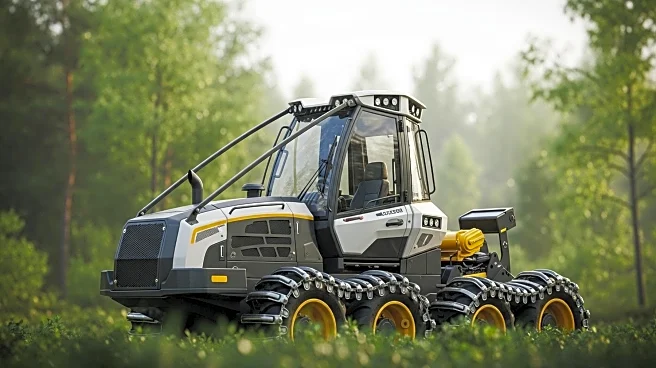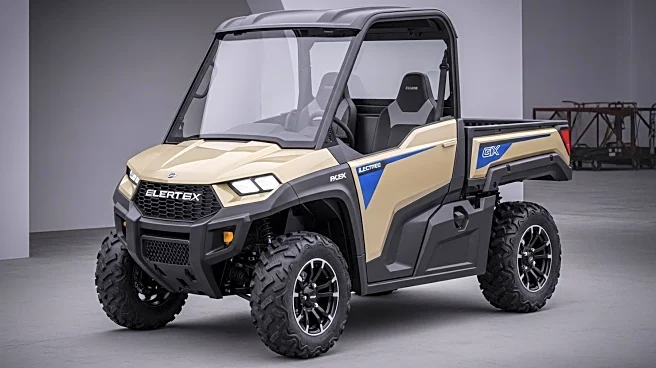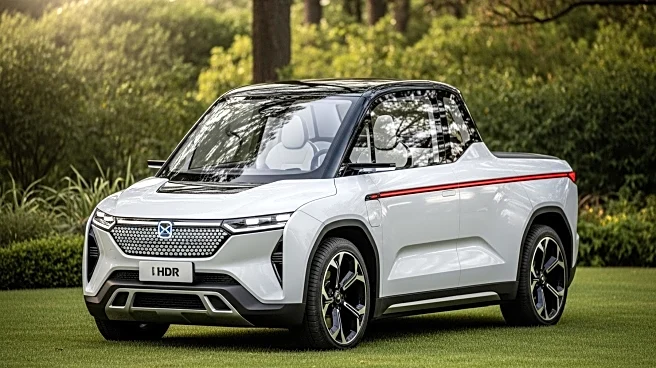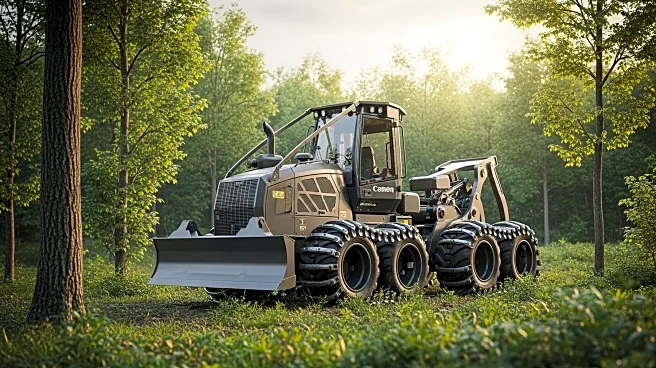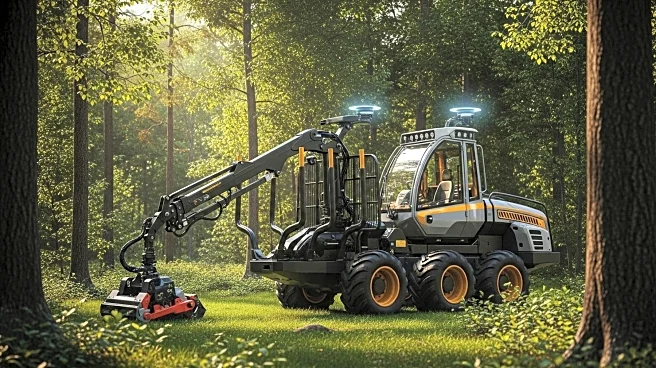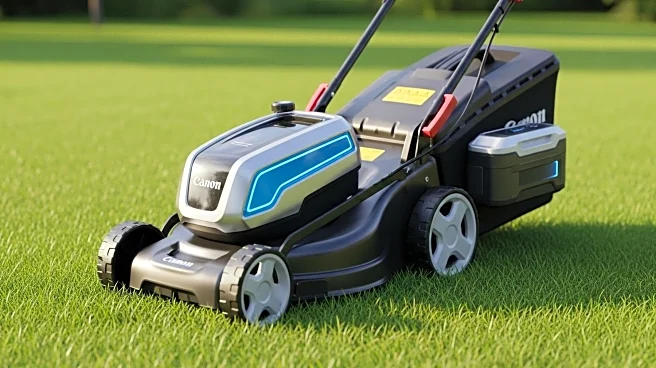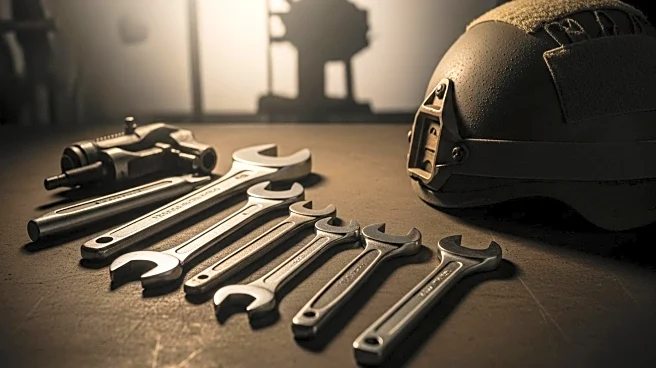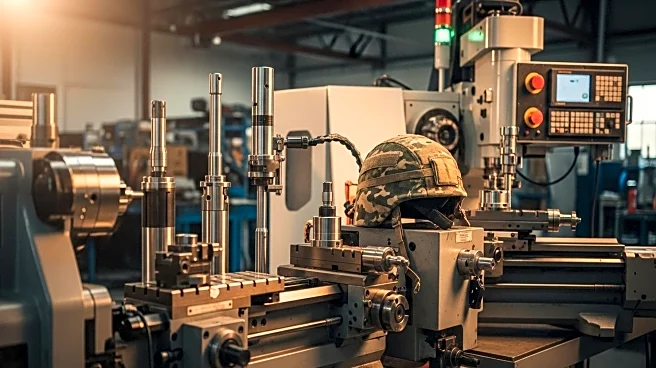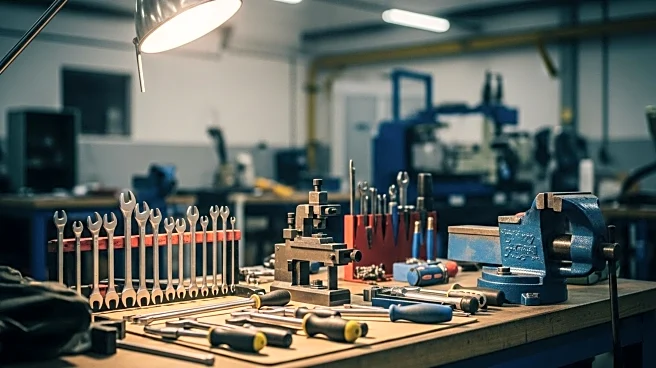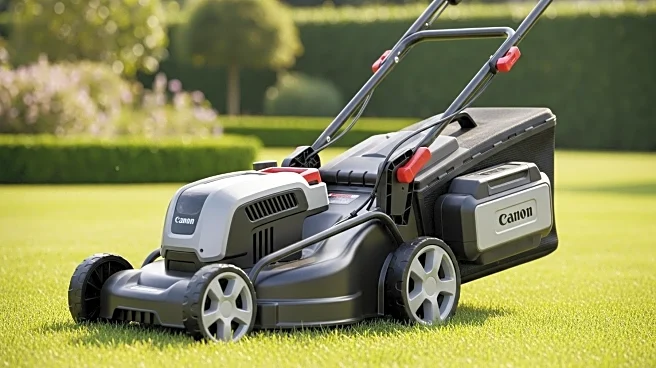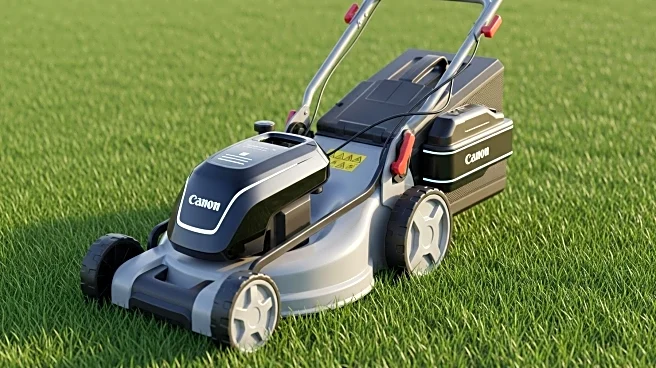What is the story about?
What's Happening?
John Deere has launched its new L-III Skidder machines, designed to improve operator comfort and efficiency in the forestry industry. These machines feature advanced cab design options, serviceability enhancements, and visibility improvements. The L-III models are equipped with TimberMatic™ Maps technology, providing real-time jobsite visualization and awareness. The machines come in two package options, base and premium, both offering new operator seats with customizable features for enhanced comfort. The premium package includes vented leather seats with cooling and heating functions, and seven-way adjustability. Additionally, the L-III Skidders are equipped with advanced lighting systems, including LED lights and improved in-cab dome lights, to enhance visibility during all hours of the day. The premium lighting package offers a 200% increase in light output compared to previous models, aiding operators in darker settings.
Why It's Important?
The introduction of the L-III Skidders by John Deere is significant for the forestry industry, as it addresses the need for improved operator comfort and efficiency. By enhancing visibility and providing advanced technology tools, these machines aim to maximize uptime and productivity in challenging environments. The focus on operator comfort is crucial, as it can lead to increased job satisfaction and reduced fatigue, ultimately improving overall performance. The advanced diagnostic capabilities and remote display access further support equipment maintenance and operational efficiency, which are vital for sustaining productivity in the forestry sector. This development reflects John Deere's commitment to innovation and meeting the evolving needs of its customers.
What's Next?
John Deere's rollout of the L-III Skidders is expected to impact the forestry industry by setting new standards for operator comfort and machine efficiency. As these machines become more widely adopted, other manufacturers may follow suit, leading to further advancements in forestry equipment technology. The enhanced visibility and diagnostic features may also prompt industry-wide improvements in safety and maintenance practices. Stakeholders, including forestry operators and equipment dealers, will likely monitor the performance and reception of these new models closely, potentially influencing future product development and investment decisions.
Beyond the Headlines
The launch of the L-III Skidders highlights the growing importance of technology integration in traditional industries like forestry. The use of real-time data visualization and advanced diagnostic tools represents a shift towards more data-driven and efficient operations. This trend may lead to broader changes in how forestry work is conducted, with increased reliance on technology to optimize performance and safety. Additionally, the focus on operator comfort reflects a broader cultural shift towards prioritizing worker well-being, which could have long-term implications for labor practices and equipment design across various sectors.
AI Generated Content
Do you find this article useful?
